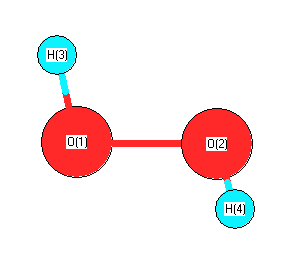.
| squib |
reference |
DOI |
| 1962Red/Ols:1311 |
Redington, R. L., Olson, W. B., Cross, P. C., Studies of Hydrogen Peroxide: The Infrared Spectrum and the Internal Rotation Problem, J. of Chem. Phys., Vol. 36 #5 pg. 1311-1326 |
10.1063/1.1732733 |
| 1965Hun/Lea:1931 |
RH Hunt, RA Leacock, CW Peters, KT Hecht "Internal Rotation in Hydrogen Peroxide: The Far Infrared Spectrum and the Determination of the Hindering Potential" J. Chem. Phys. 42, 1931, 1965 |
10.1063/1.1696228 |
| 1979HUB/HER |
Huber, K.P.; Herzberg, G., Molecular Spectra and Molecular Structure. IV. Constants of Diatomic Molecules, Van Nostrand Reinhold Co., 1979 |
10.1007/978-1-4757-0961-2 |
| 2006Rus/Pin:6592 |
B Ruscic, RE Pinzon, ML Morton, NK Srinivasan, M-C Su, JW Sutherland, JV Michael "Active Thermochemical Tables: Accurate Enthalpy of Formation of Hydroperoxyl Radical, HO2" J. Phys. Chem. A 2006, 110, 6592-6601 |
10.1021/jp056311j |
| Gurvich |
Gurvich, L.V.; Veyts, I. V.; Alcock, C. B., Thermodynamic Properties of Individual Substances, Fouth Edition, Hemisphere Pub. Co., New York, 1989 |
|
| Shim |
Shimanouchi, T. , Tables of Molecular Vibrational Frequencies, Consolidated Volu |
10.6028/NBS.NSRDS.39 |
| webbook |
NIST Chemistry Webbook (http://webbook.nist.gov/chemistry) |
10.18434/T4D303 |











